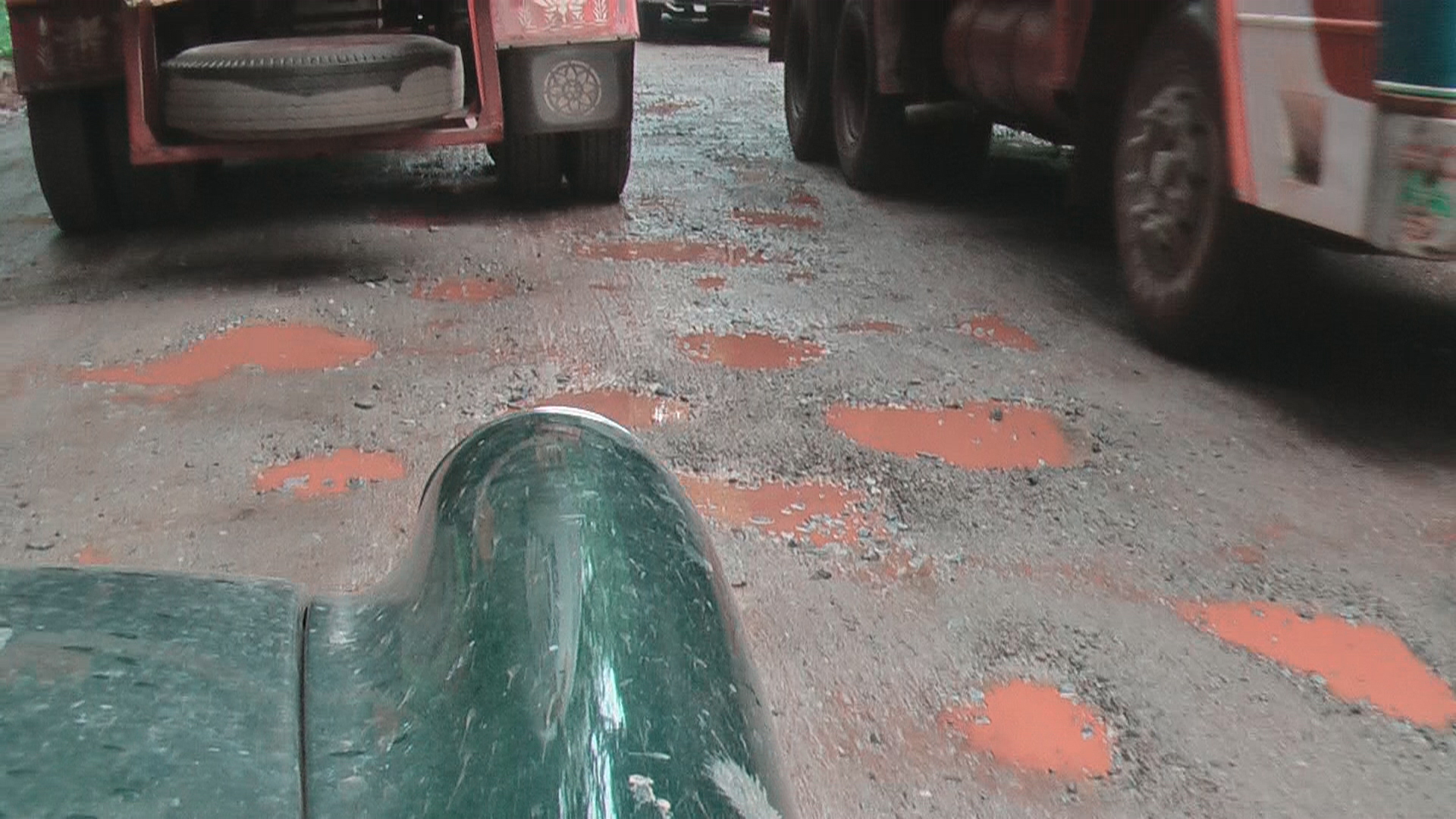
We are in Chennai, but only just.
The time spent in Candolim was just what I needed. I met up with a lovely English (well almost English, from Watford) couple who were kind enough to take the old man under their wing. We had a great time and I thank them.
The day before we were scheduled to leave Candolim I notice that Bridget’s rear near-side tyre was a little deflated. I found a garage with an airline just down from the hotel and they agreed to inflate it for me. However the tyre didn’t want to play and on closer inspection I found it was badly cut in several places. This was obviously as a result of the road conditions coming into Goa. The guys at the garage quickly replaced the wheel with the spare but we haven’t been able to get a replacement tyre so we are hoping that we don’t get another puncture.
There are two alternative main routes from Candolim to Bangalore, the overnight stopping point on route to Chennai. The first would be to retrace our steps to the main highway NH4, but I know that the first 100 mile stretch is awful. The second route runs down the Goan coast, on route NH17, to Mangalore and then on NH48 to Bangalore. This route was strongly recommended and so that’s direction we set out on.
Major mistake. Although the route is quite beautiful in places the chance to see and appreciate it is rare as you struggle across large tracts of rocky washed out roads. The tracts can be anything up to 2 miles long. Our average speed was just over 24 mph as it took 10½ hours to reach Mangalore, a distance of 255 miles. I decided we could not continue further that day and found a hotel for the night.
Mangalore to Bangalore is 221 miles and it took us some 8½ hours to cover that, an improvement but most of the time was spent on the first 100 miles. Again much of the road was no more than a very bad track. I am amazed that Bridget is still in one piece as the conditions were as extreme as any found in Pakistan.
Just to make the journey interesting fate had one more surprise for us. The route after the first hundred miles is single carriageway of reasonable condition although you still have to be on the lookout for large potholes. These can be very difficult, particularly if they occur whilst you are overtaking, as there is little room to avoid them. The procedure for overtaking is to sit on the tail of the vehicle in front, sound your horn several times to ensure they know you are there and then execute the manoeuvre. This is done whether or not on a blind bend, approaching the brow of a hill or just on a clear stretch, ignoring of course cyclists, pedestrians, water buffalo, stray dogs, etc.
HGV’s are always a problem and on this type of route are almost always in short convoys. It was one of these convoys, of gas tankers, that caused me to consider the new sport of ‘jungle driving’. I had carried out the routine horn blowing and started to overtake the first (or last depending on your perspective) of the tankers in the line when it decided to cut the corner of a slight right-hand curve in the road. Of course as we were alongside it meant that the room available to us was narrowing from 6 feet to 1. The choice was simple, have the side of Bridget ripped off or take a diversion into the jungle on the offside of the road. Unfortunately the way the road is constructed means that along much of it there is a ‘shoulder’ that is around 12˝ deep. That’s about 9˝ too much for the car and so there was a terrible grating noise, a great deal of bumping and a portion of screeching (I think the last bit may have been me). Some how we avoided the vegetation and actually made it back onto the road ahead of the tanker. The driver, or aimer is probably a more accurate description in India, realised what had happened, braked and pulled over to the nearside to give us, belatedly, some room.
The engine was still running and the gauges still registering as normal. All four wheels were still attached as was almost everything else except the rear number plate that was hanging down on one side. I used a wiring strap to fix the plate and drove on to Bangalore. On cursory examination the area around the differential is badly scrapped and the brake piping has been bent but that appears to be the only damage.
Just as I was about to leave the hotel the next day there were the usual huddle of interested people around Bridget taking photos when the crowd parted to let a fellow Englishman through. John is an engineer with BA who has been in India for three months. Although our conversation was necessarily short it was good to make base with someone from home even though only momentarily.
The following day we continued to Chennai, with little excitement, and Bridget will be thoroughly cleaned before being handed over to the shipping agent.